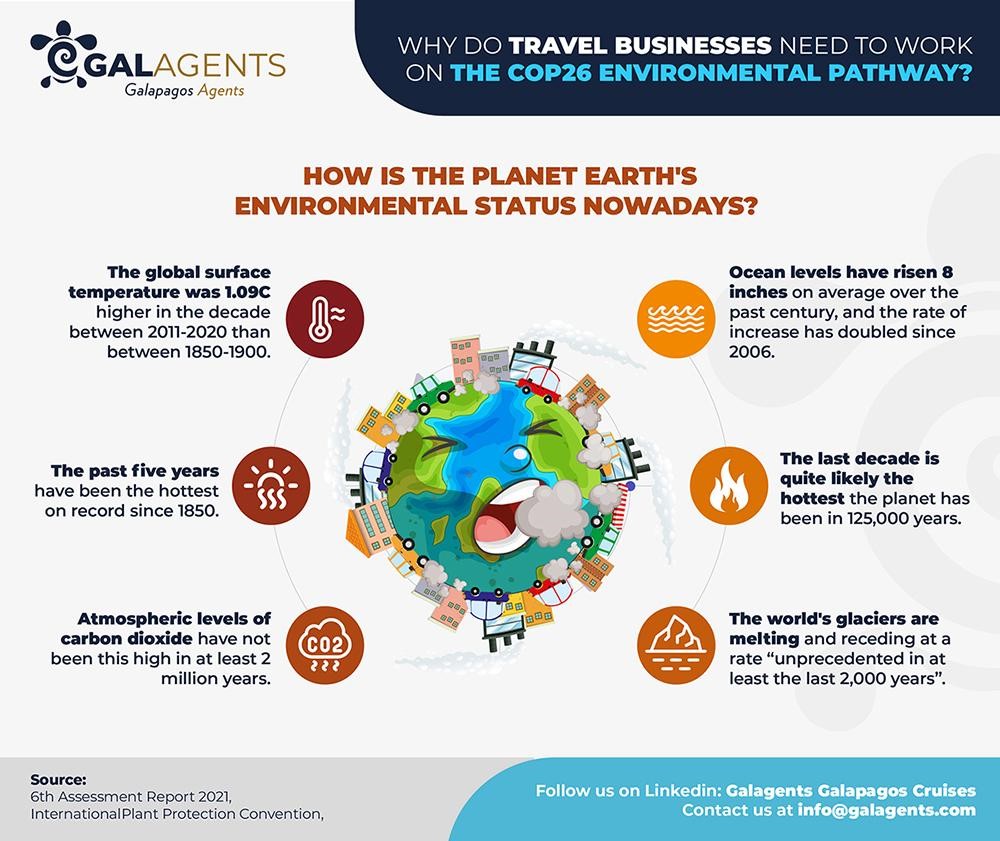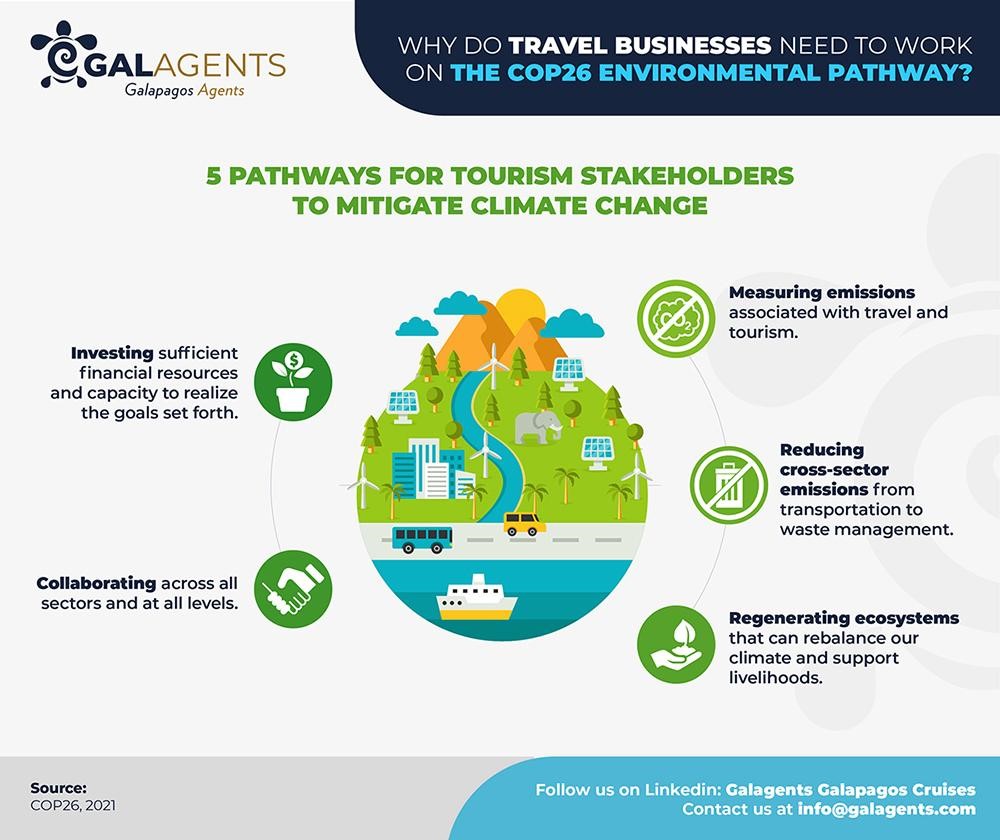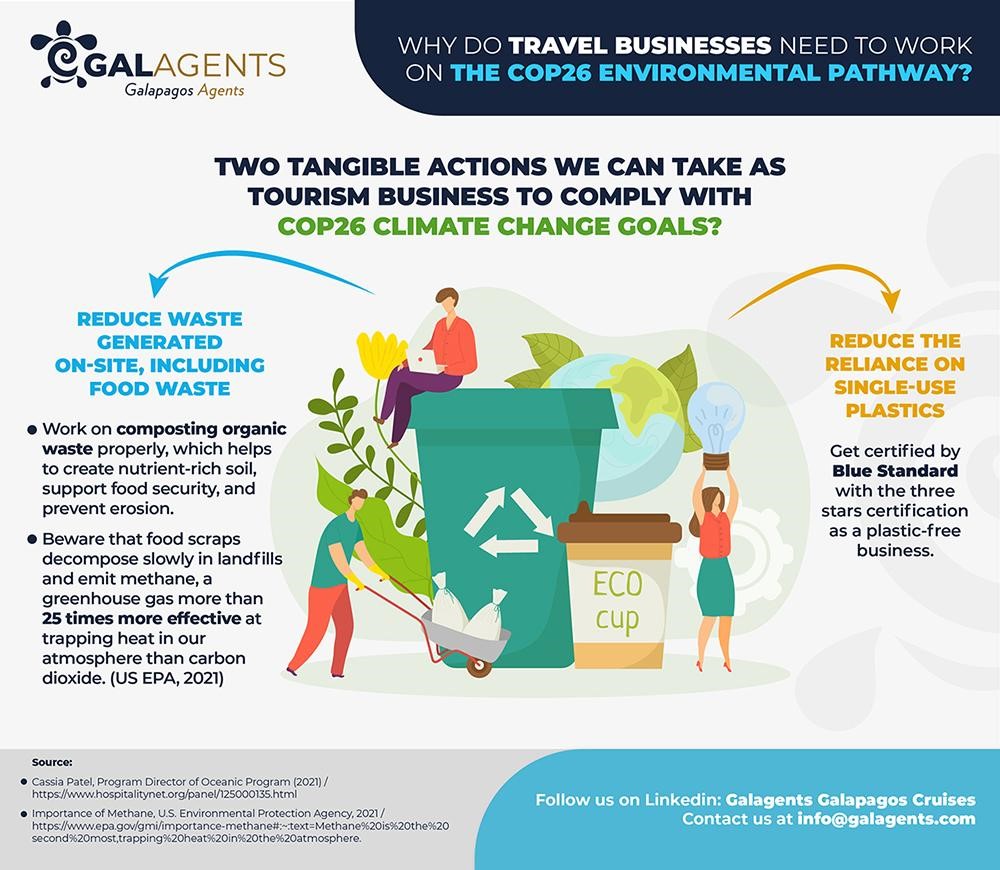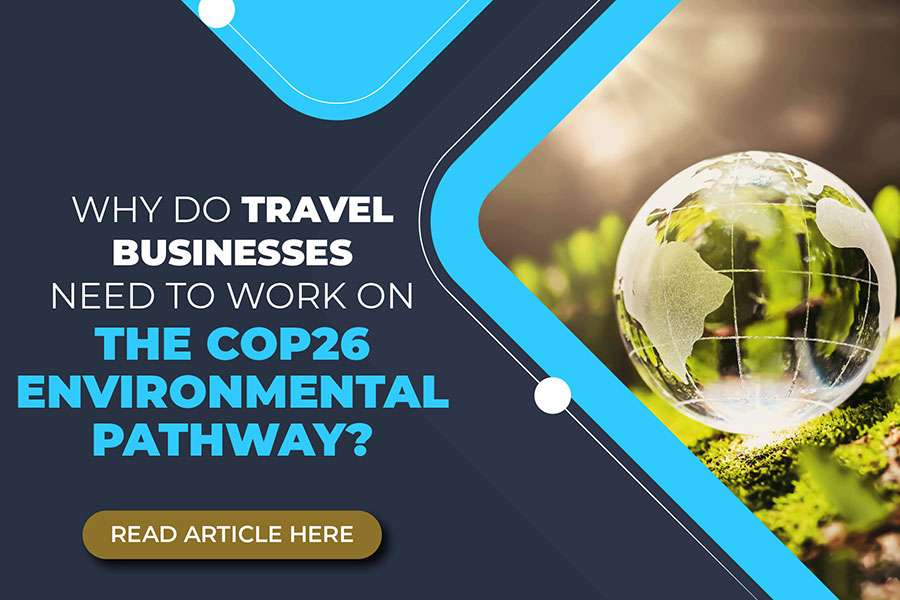The action of traveling is associated with leisure, relaxation, new cultures and things to learn, especially in long-haul travel. However, the UNWTO (2019) reported that tourism CO2 emissions grew at least 60% from 2005 to 2016. Thus, according to António Guterres, UN Secretary-General, “this is a code red for humanity.”
Last November, in Glasgow, UK, worldwide leaders from the public and private sector met to check the advances on the Paris Agreement. It was time to update on the agreements established at that convention, but now we have to move fast. We must set actions for halving the CO2 emission by 2030 and achieving net-zero by 2050.
As the COP26 website states, this is “the world’s best last chance to get runaway climate change under control.”
2030 is the deadline for humans to turn the climate change tide and guarantee a healthy and sustainable living space on earth. Otherwise, humanity will face a dark future. Indeed, according to International Plant Protection Convention (IPPC, 2021), the world is currently facing this pessimistic scenario:
- Ocean levels have risen 8 inches on average over the past century, and the rate of increase has doubled since 2006.
- The last decade is quite likely the hottest the planet has been in 125,000 years.
- The world’s glaciers are melting and receding at a rate “unprecedented in at least the last 2,000 years.”
- Atmospheric levels of carbon dioxide have not been this high in at least 2 million years.
- The global surface temperature was 1.09C higher in the decade between 2011-2020 than between 1850-1900.
- The past five years have been the hottest on record since 1850.

As humans, we need to understand what we’re doing to our environment. As Cassia Patel, Program Director of Oceanic Program (2021), said, “We must learn how to coexist with each other so that we can do the same with our living planet.”
We only have eight years for 2030, and we must act now! That’s why COP26 set a milestone in addressing climate change issues at different levels and sectors. Public-private stakeholders from various industries are committed to moving from the agenda to take action, which is the real challenge.
The tourism sector used the COP26 to involve around 300 entities worldwide in strategizing how tourism will cope with climate change issues, looking to halve emissions by 2030 and achieve net-zero by 2050.
COVID-19 gave tourism a break to rethink, replan, and reactivate the industry to guarantee ecological sustainability. Hence, COP26 could be a huge turning point for the role of sustainability in tourism (Airport Technology, Nov. 03rd, 2021).
The pandemic helped us remind ourselves how tourism depends on nature. As Nelly Gedeon, Founder and CEO of Wayaj, Inc, claims, “The most basic element of the product sold is nature, whether it is experiences like the beach, or a meal in a restaurant, a healthy planet is necessary to support it” (Hospitalitynet.org, 2021).
As travel stakeholders, we need to provide transparency to travelers to increase the demand for green travel. As Inge Huijbrechts, Global Senior VP Sustainability, Security and Corporate Communications for Radisson Hotel Group, said, “We no longer have the luxury of waiting and hoping that technological innovation or carbon capture will halt climate change.”
For doing so, we need to ally with the public sector to work on tourism’s five pathways to mitigate climate change established at the COP26 by:
- Measuring emissions associated with travel and tourism.
- Reducing cross-sector emissions from transportation to waste management.
- Regenerating ecosystems that can rebalance our climate and support livelihoods.
- Collaborating across all sectors and at all levels.
- Investing sufficient financial resources and capacity to realize the goals set forth.

Moreover, as tourism businesses, we can work on these two tangible actions:
- Reduce the reliance on single-use plastics, very common in food service, accommodations, and hospitality.
- Reduce waste generated on-site, including food waste.

Feel free to download here the infographics in PDF.
Firstly, Blue Standard is an international organization that can guide us to become a plastic-free business. That applies to everyone willing to enter into the sustainability pathway, not necessarily tourism companies. But, how and what can Blue Standard do for us?
“The Blue Standard by Oceanic Global offers open-source resources, step-by-step auditing and consultation, consumer-facing seals and buying deals with vetted vendors to help businesses eliminate plastics and operate sustainably” (Blue Standard, 2021).
Secondly, in the case of organic waste, we need to work on composting it properly, which helps create nutrient-rich soil, support food security, and prevent erosion (Cassia Patel, 2021).
Did you know that the lack of proper treatment of organic waste can be 25 times more contaminant than CO2 emissions, besides what we may be thinking?
According to the US EPA, food scraps decompose slowly in landfills and emit methane, a greenhouse gas more than 25 times more effective at trapping heat in our atmosphere than carbon dioxide. Thus, it is imperative to design effective composting systems to decompose organic trash and nurture the soil.
The biggest takeaway is that the world is running out of time, and we need to act now! We must internalize as tourism businesses that we don’t need to be a big travel corporation to take action and mitigate the tourism footprint on nature and climate change.
We depend on nature to offer unforgettable experiences on breathtaking natural sites. Hence, if we want to step ahead and take action, we can check our operation and identify areas of improvement. And, if we’re going to go deeper, we can even get the three stars certification of plastic-free business by Blue Standard. Thus, we need to enter the road of green travel.
Remember that travelers are becoming more environmentally conscious. So, we still have time to rethink, replan, and sustainably reactivate tourism operations by working close to local communities to plan and act accordingly to what the world and travelers need.
At Galagent, we have a long road to take, but we’ve been driving through the green road a few years ago. If you want to know why and how we became more environmentally conscious, don’t miss reading this article in which we address it.

